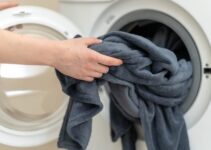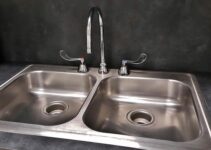Almost everyone has experienced brown stains on their ceilings at one time or the other. Unsightly brown stains on ceilings are as common in residential homes as they are in commercial facilities; it is something homeowners and tenants have to deal with sooner or later.
It is quite possible to fix the disgusting brown spots on your ceiling yourself without hiring a professional roof contractor – here are the causes and DIY fixes for ceiling stains with no leaks.

Brown Stains on Ceiling but No Leak: Common Causes
Several factors are responsible for brown stains on your ceilings, some of these are:
1. Weather damage
Did you just experience storms in your area recently during the rainy season? It may have impacted your roof and ceiling. Rough weather such as rain, hail, and snow combined with winds, thunder and lightning will surely leave compromising impacts on your residential roofs. Weather damage can be responsible for torn roofing, broken gutters, broken ceilings, and unsightly wall-stains among others.
2. Water leaks
In most cases, water leaks are behind the brown stains and discoloration in your ceilings. The leaks may not be visible and you may not even believe there is a leak anywhere, but a proper investigation will reveal that water seepage is the culprit.
The leak may not be from your apartment, but from the apartments or floors above your residence. It may be from their broken taps, damaged plumbing, faulty laundry machines, and structural damage that must be fixed quickly.
3. Poor plumbing
Poor plumbing may also be responsible for the brown stains on your ceiling. If the plumbing that runs through the attic is faulty, it will leak water that will stain your ceiling. Sometimes the seepage may have caused mold growths that leave terrible stains on your ceiling or wall. Sometimes the bad plumbing may be from the apartments above your own.
4. Condensation from improperly insulated ducts
When ducts in HVAC systems, heating appliances, and other home gadgets are not properly insulated, it may lead to condensation that may leak to nearby areas. Damaged ducts and sealants may also be the problem, in which case you may have to contact a professional repairer for help.
Consequences of stains on ceilings
Before considering the DIY fixes appropriate for stained ceilings, let’s consider the structural and health implications of brown ceiling stains. This section is necessary because people tend to ignore ceiling and wall stains, thinking it is nothing serious that might likely disappear with time.
- Unsightly mess
When people visit your house or office, their eyes will naturally be drawn to the unsightly mess on your wall or ceiling and they will find it repulsive. You don’t want visitors to draw your attention to stains on your ceilings and wall, do you? It may be very embarrassing for visitors to always comment or pass remarks about eyesores you could have fixed a long time ago.
- Health dangers of mold
Water leakage or frequent dampness in your walls will create humidity that will foster the growth of molds. Many people are allergic to mold because it is a fungal infestation that can cause ill health. If any members of your family are allergic to mold, then it makes no sense to leave ceiling stains in place. Sometimes the molds may find their way into your HVAC system and pollute your indoor air, hence the need to call in a professional to fix the problem.
- More discoloration and more damage
If you fail to fix your stained ceiling on time, it will not only lead to more discolorations and attract more insults, it will also create structural damage to your residence. To protect the integrity of your house and to avoid unflattering remarks from people, you must fix the stains yourself or contact a roofing consultant for assistance.
Brown Stain on Ceiling: DIY Fixes
Before you decide on fixing your ceiling stains, you must determine the causes and extent of the damage. A professional roofing or HVAC expert may help you to determine the causes of the stains and the extent of potential damage. You must fix the causes of the stains first before proceeding to fix the stains themselves, or your solutions may not last.
1. Use bleach to remove the stains
Mix one part of bleach solution with two parts of water and pour the mixture into a spray bottle. Spray the mixed solution directly on the ceiling stain to remove it. But be sure you have switched off the ceiling fan or HVAC system before doing this so the vapor from the bleach is not drawn into your indoor air.
Open all the windows for proper ventilation before spraying the stain and be sure to use a nose mask or respirator to prevent inhaling bleach fumes.
2. Use an oil-based primer before painting again
Once the stain is removed from the ceiling, you’d want to repaint the area again. If you are repainting immediately after applying the bleach spray, then you may want to dry the section by placing a fan or hairdryer over the area.
Apply oil-based primers to block the stain from coming back before repainting. Some primers are in form of aerosols that can be sprayed and others can be in shellac.
NB: A bleach solution and oil-based or shellac-based primers will also work for smoke stains, soot, and nicotine discolorations.
3. Hire a professional to help
You can only do so much with ceiling stains and wall blotches. If the causes are far beyond what you can handle, it’s best to hire a professional for assistance. While you may usually be tempted to fix the stains instantly, a professional will go for the causes before treating the consequences. A professional will help with repairing leaking roofs, fixing faulty plumbing, sealing seeping ducts, and dealing with condensation and molds among other things.
Do not wait for people to point out the eyesore of your ceiling stains. Get to work fixing it immediately using the DIY techniques outlined in this guide, or by hiring a professional to handle more expert areas. And while it might be cheaper to fix the problem yourself, desired results will be more guaranteed with a paid professional.





